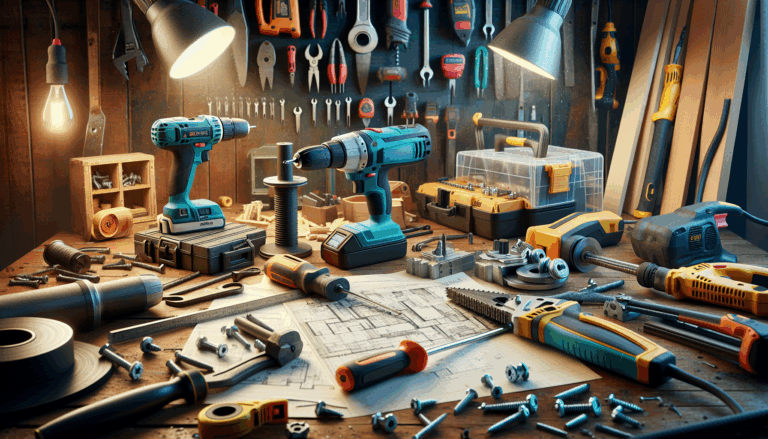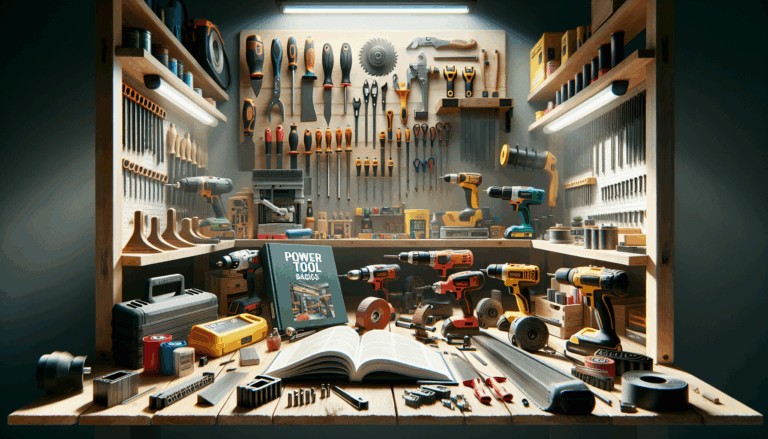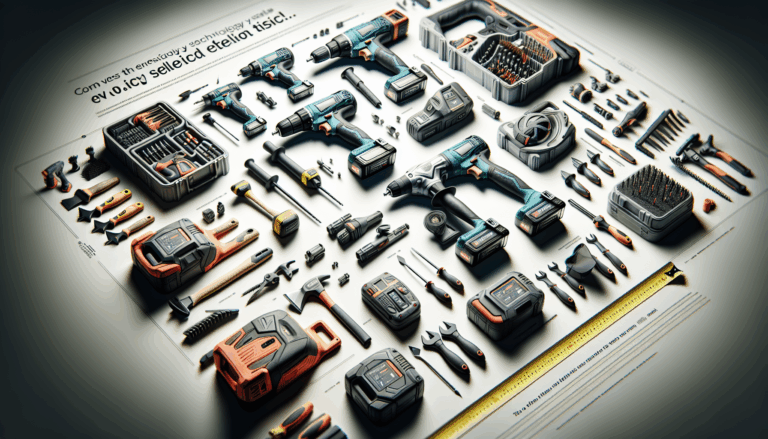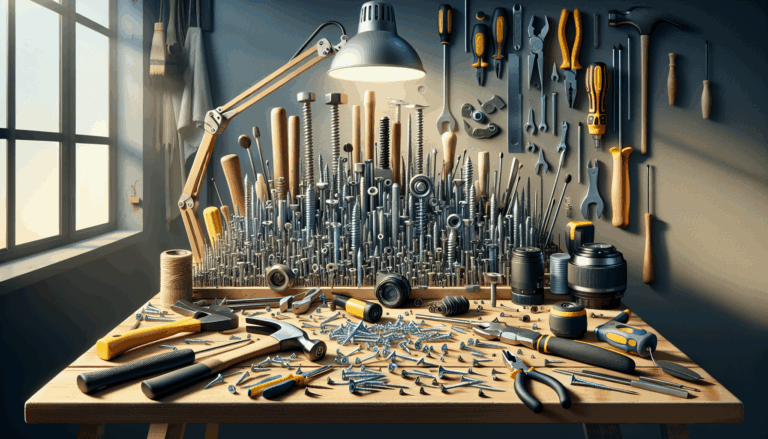Power Tool Usage & Projects part 2
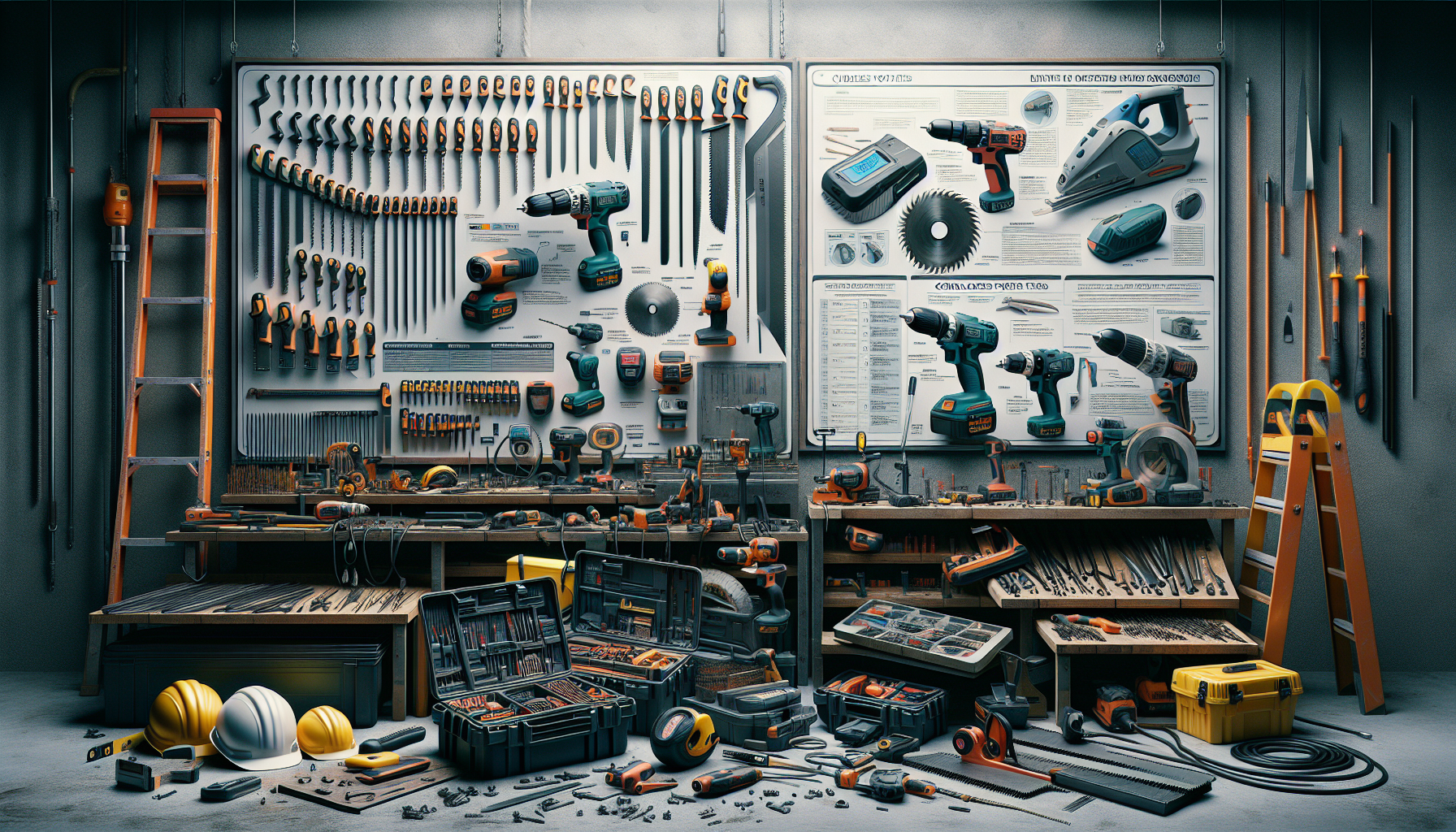
Power Tool Basics
Understanding the fundamentals of power tools is essential for both beginners and experienced users to make informed decisions that enhance safety and efficiency. At the heart of many cordless power tools are lithium-ion batteries, which have revolutionized portability and performance. These batteries operate through electrochemical reactions that store and release energy, providing a consistent power output on demand. Knowledge of battery capacity, measured in ampere-hours (Ah), and voltage helps users choose tools suited to their specific needs. Higher voltage typically indicates greater power output, making it ideal for heavy-duty tasks, whereas larger battery capacity means longer runtimes before recharging is needed (source: OnePowerTool Blog).
Selecting the right tool or blade depends primarily on the material being worked on and the nature of the job. For cutting wood, blades with more teeth per inch produce smoother finishes, while blades with fewer teeth cut faster but more roughly. Metals require specialized blades made from carbide or bi-metal materials, designed to withstand higher temperatures and resist wear. Also, matching the size and arbor type of blades with your tools’ specifications is critical for safety and optimal performance (source: OnePowerTool Blog).
General guidelines for power tool users include choosing tools that fit your specific project needs, always consulting the manufacturer’s blade compatibility recommendations, and maintaining batteries properly. Avoid exposing batteries to extreme temperatures and excessive charging cycles to prolong their lifespan. Beginners should also pay attention to safety features such as blade guards, electric brakes, and ergonomic designs that help reduce fatigue during prolonged use (source: OnePowerTool Blog).
For a comprehensive understanding of power tools, visit our resource hub at OnePowerTool Blog, where detailed guides on power tool selection, battery care, and blade choices can help you maximize efficiency, safety, and longevity of your equipment (source: OnePowerTool Blog).
Proper Maintenance and Safety
Proper maintenance and safe operation of power tools are crucial for extending their lifespan and preventing accidents. Regularly cleaning tools to remove dust and debris, lubricating moving parts, and inspecting cords and batteries for damage are simple yet effective steps. Overheating issues can often be mitigated by allowing tools to cool down, ensuring vents are clear of dust, and replacing worn brushes as needed. For stubborn or stripped screws, employing screw extractors or rubber bands can provide the necessary grip for removal, saving you from costly repairs or replacements (source: OnePowerTool Blog).
Battery care is also vital for cordless tools. Prolonged battery life depends on storing batteries in cool, dry environments, avoiding complete discharges, and using chargers designed specifically for your battery type. Keeping contacts clean and following manufacturer guidelines for charging and storage safeguards your investment over time (source: OnePowerTool Blog).
Safety precautions include always wearing personal protective equipment (PPE) such as safety glasses, gloves, and hearing protection, especially during maintenance. Power tools should always be unplugged or batteries removed before cleaning or adjustments. Using tools only for their intended functions and keeping your work area tidy helps prevent accidents (source: OnePowerTool Blog).
Following these simple maintenance and safety practices not only extends the life of your power tools but also ensures a safe working environment. For more detailed safety tips and maintenance procedures, visit our full blog.
Power Tool Usage & Projects
Mastering the effective and safe handling of power tools unlocks new levels of DIY efficiency and craftsmanship. Advanced techniques include maintaining steady drilling speeds, choosing the right drill bits for specific materials, and applying controlled pressure for cleaner cuts and longer tool life. For example, a brad-point bit produces cleaner holes in wood, while cobalt bits are optimal for drilling metal. Using accessories like depth stops on drills ensures uniform hole depth, and pairing a jigsaw with clamps yields more precise cuts (source: OnePowerTool Blog).
Your project choices and the tools you select are interconnected. Cordless drills offer portability and ease for quick repairs, while corded drills tend to sustain higher power output suited for demanding tasks. Specialty tools like rotary hammers are designed for masonry work, capable of drilling into concrete with percussive action that standard drills cannot match. Multi-tools with interchangeable blades expand versatility, allowing sanding, cutting, and grinding, all with one device (source: OnePowerTool Blog).
Combining different tools intelligently—for example, using a drill with a depth gauge or a jigsaw with stabilized clamping—can significantly improve the quality of your work. Understanding accessory compatibility, battery types, and ergonomics also plays an important role in making efficient, safe, and comfortable choices for your projects. For guidance on specific applications and tips, browse our [detailed DIY guides](https://onepowertool.com/blog/).
Power Tool Batteries
Advancements in rechargeable battery technology have transformed power tools into lighter, more reliable, and longer-lasting devices. Lithium-ion batteries are now the industry standard due to their high energy density, lack of memory effect, and reduced weight compared to older Ni-Cd and NiMH options. Many brands, however, develop proprietary battery systems, like Milwaukee’s M18 or DeWalt’s FLEXVOLT, which offer ecosystem advantages, allowing interchangeability across multiple tools (source: OnePowerTool Blog).
Proper care of these batteries is essential to maintain their performance. Store batteries in cool, dry environments, avoiding extreme heat or cold. Do not fully discharge batteries regularly; instead, recharge them before they drop below 20%. Use the charger designed specifically for your battery type, and clean contacts periodically to ensure good connections. To maximize lifespan, avoid overcharging or leaving batteries on chargers for prolonged periods after they’re full, and cycle batteries occasionally by fully discharging and recharging (source: OnePowerTool Blog).
Following these practices helps preserve battery capacity and extends operational life, providing reliable power for your ongoing projects. For more detailed battery maintenance tips, visit the dedicated section of our blog.
Power Tool Accessories
Accessories are the extensions and attachments that significantly enhance the functionality of your power tools. Common accessories include various blades, sanding pads, and attachment heads, all designed for specific materials and tasks. For example, carbide-tipped saw blades are great for cutting dense hardwoods, while finetooth blades excel at detailed cuts in softer materials. Shears or nibblers enable trimming of sheet metal and plastic with precision, depending on their gauge and capacity (source: OnePowerTool Blog).
Selecting the right accessory depends on project requirements and compatibility with your tool’s specifications. Proper maintenance of accessories—such as regularly inspecting for wear, cleaning residue, and storing blades and attachments in dry, safe places—ensures they operate safely and last longer. Using the correct accessory not only yields cleaner, more precise results but also minimizes undue stress on your power tools, preventing damage and safety hazards (source: OnePowerTool Blog).
Explore our guides on accessory selection and maintenance to get the most out of your tools and achieve professional results in every project.
Major Power Tool Brand Comparisons
When choosing power tools, it’s crucial to consider qualities such as reliability, innovation, and ecosystem compatibility offered by top brands like DeWalt, Makita, Milwaukee, and Bosch. These brands have established industry leadership through durable products, cutting-edge features, and extensive tool ranges that cater to both professionals and DIY enthusiasts.
Batteries are a key differentiator. For instance, Milwaukee’s M18 system and DeWalt’s FLEXVOLT platform are popular for interchangeable battery use, reducing the need for multiple chargers and batteries. This ecosystem approach enhances convenience and cost savings, especially for those undertaking large or diverse projects (source: OnePowerTool Blog).
The industry has seen significant evolution—from corded electric tools to lightweight, cordless models utilizing advanced lithium-ion technology. These innovations have resulted in ergonomic, portable tools capable of delivering high power output, extending usability in various job settings.
Your choice should be based on your specific needs: durability and battery life for contractors, versatility and affordability for hobbyists. Comparing feature sets, warranties, and user reviews can assist in making an informed decision. For a detailed analysis, visit our [Power Tool Brand Guide](https://onepowertool.com/blog/).
Power Tool Repair & Troubleshooting
Proper maintenance and timely repairs are crucial for keeping your power tools in optimal working condition. For beginners, start with basic diagnostics like checking for power supply issues, overheating, or unusual noises. Always ensure the tool is unplugged or the battery is removed during inspection. Common fixes include replacing worn brushes in motor assemblies, cleaning dust and debris from vents, and tightening loose fasteners or connections (source: OnePowerTool Blog).
If your tool refuses to start, examine the power source first—ensure batteries are charged or cords are properly connected. Check for blown fuses or tripped circuit breakers. Further troubleshooting may involve inspecting wiring for damage, verifying motor functions, or replacing worn parts. For more advanced repairs, consult professional technicians or detailed tutorials available online (source: OnePowerTool Blog).
Regular maintenance—such as cleaning, lubrication, and parts inspection—can prevent many issues before they occur. Maintaining a repair log can help track service history and schedule preventive care. To learn more about diagnosing and fixing common power tool problems, browse our comprehensive repair guides at our blog.
DIY Power Tool Projects
Getting hands-on with DIY projects using power tools can be both enjoyable and highly rewarding. Beginners can start with simple tasks like building wooden shelves, birdhouses, or garden planters to develop basic skills. These projects reinforce foundational techniques like measuring, cutting, sanding, and assembling, providing confidence and practical benefits (source: OnePowerTool Blog).
Advanced DIYers can challenge themselves with custom furniture, elaborate storage solutions, or home renovation builds. Step-by-step guides are available to ensure safety and accuracy, covering essential topics such as selecting the right tools, safety precautions, and finish techniques. Regularly sharpening blades, cleaning dust, and inspecting electrical cords will keep your tools performing at their best and prevent setbacks.
Adding personal touches—like paint or decorative accents—makes each project unique. Whether you’re a beginner or experienced craftsperson, our DIY project tutorials help you transform ideas into reality, elevating your skill set and improving your space (source: OnePowerTool Blog).
Additional Resources and Engagement
Our site includes interactive quizzes, FAQs, and detailed guides to enhance your learning and project execution. For instance, test your knowledge about safety practices or discover how to troubleshoot common issues. Our articles cover a broad spectrum—like the benefits of vitamin D, mental health exercises, or sleep hygiene—providing credible, research-backed information (source: OnePowerTool Blog).
Explore our complete collection at OnePowerTool Blog. Whether for improving health, mastering power tools, or engaging in creative projects, our content is designed to empower and inform.
Popular Questions About Power Tools
- Q1: What power tools are best for beginners?
Beginners should start with versatile, user-friendly tools like cordless drills, circular saws, and jigsaws. Look for models with adjustable speeds and ergonomic handles to ensure control and comfort (source: OnePowerTool Blog). - Q2: How do I maintain my power tools for longevity?
Regular cleaning, lubrication, checking for signs of wear, and proper storage are key. Keep tools dry and batteries charged but not overcharged to maintain performance (source: OnePowerTool Blog). - Q3: What safety tips should I follow when using power tools?
Always wear PPE, keep workspaces clean, and follow manufacturer instructions. Never bypass safety features like blade guards, and unplug tools during maintenance (source: OnePowerTool Blog). - Q4: How can I troubleshoot a power tool that won’t start?
Check power sources, batteries, switches, and fuses. Inspect wiring and motor components for damage, and seek professional repair if necessary (source: OnePowerTool Blog). - Q5: What projects are good for building skills with power tools?
Start with simple projects like shelves, birdhouses, and basic furniture. These help develop measuring, cutting, and assembly skills gradually (source: OnePowerTool Blog).


